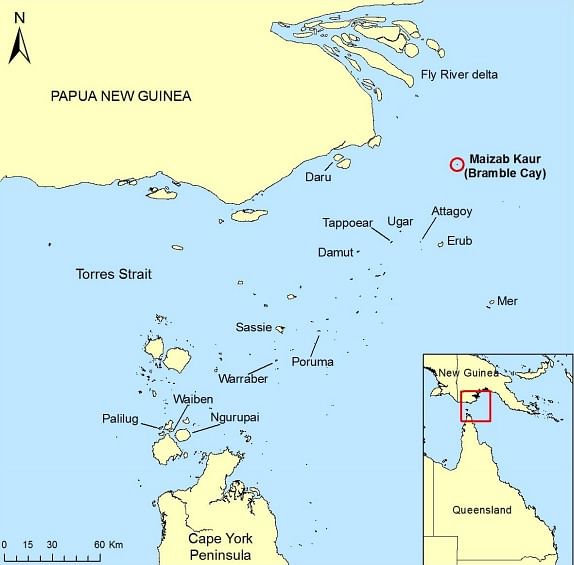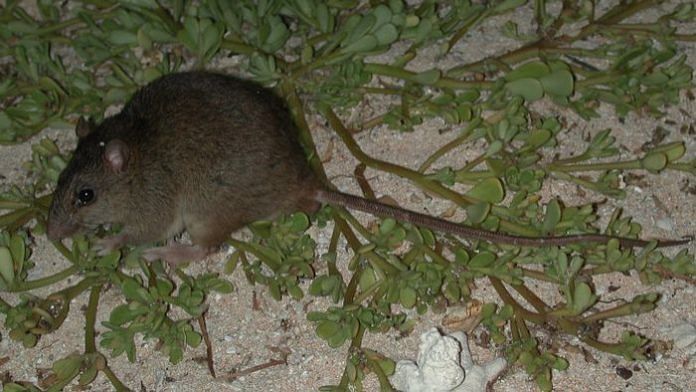Bengaluru: A rodent that lived off the Australian coast has rather quietly set off alarm bells in a world where a changing climate seems to have set the stage for disaster.
The Australian Environment Minister this week declared the Bramble Cay melomys officially extinct, at least 10 years after its last reported sighting. The cause of extinction has been identified as anthropogenic, or human-induced, climate change.
The melomys, commonly known as the mosaic-tailed rat, was endemic to a small isolated island in the Great Barrier Reef.
It was a big rodent, with a six-inch body and an even longer tail. Its fur was reddish brown on its back and greyish brown on the belly. It also had very long black hair on its back. Its tail was long and scaly, and the melomys had the ability to wrap it around objects to grasp them, much like monkeys.
It fed on vegetation, both growing and washed up, and was also known to consume turtle eggs.
The tiny rock of an island (“cay”) that the melomys lived on, the Bramble Cay, is just three metres high and about the size of two football fields.
It is believed that climate change led to higher sea levels and increased the frequency of storm surges and other extreme events on the island, causing the melomys’ demise.
Also read: Human-caused climate change causes first extinction of a mammal
Last seen in 2009
According to a report prepared by the University of Queensland and the Queensland government, the melomys was first observed on Bramble Cay in 1845, with statements from the time noting a population in the “hundreds”. An official survey in 1978 confirmed the same. Two decades later, however, a survey reported a population of around 90, the report adds.
Over the years, increasing climate change has caused regular storm surges on Bramble Cay, wiping off vegetation. It is also likely that the island itself submerged more than once.
As a result, surveys on the island in 2002 and 2004 reported only about 10 to 12 melomys.
When researchers turned up at the island for a survey in 2014, they did not find any melomys, the report states. This prompted a more thorough study in 2016 by the University of Queensland, which confirmed that there were zero surviving melomys on the island.
The researchers stated at the time that information obtained from a professional fisherman, who was an annual visitor to the Bramble Cay over the preceding decade, suggested that the last-known sighting of the melomys was in late 2009.
The animal was declared extinct in 2016, and the extinction formally recognised by the Australian government on 18 February.
Also read: The many ways climate change will leave us high & dry, in one table
Not cute enough
In 2008, the alarming decline in the number of the melomys led the Australian government to devise a conservation plan.
However, it was reportedly underfunded and never implemented. According to a report in Australia’s ABC news website, scientists believe one of the main reasons that this very foreseeable disaster could not be averted was because rodents weren’t attractive and outreach for their conservation just did not evoke enough public sympathy.

Others on the verge of extinction
The extinction has brought into focus more animals from Australia and New Zealand that are inching towards extinction.
The Spectacled Flying Fox, for instance, saw its population drop down to a third after the rest of the individuals died in one single heatwave season.
Wildfires have also taken a toll on animal and bird populations.
Less than 150 Western ground parrots remain in south-west Australia, and their entire population could potentially be wiped off the planet by one single bush fire.






